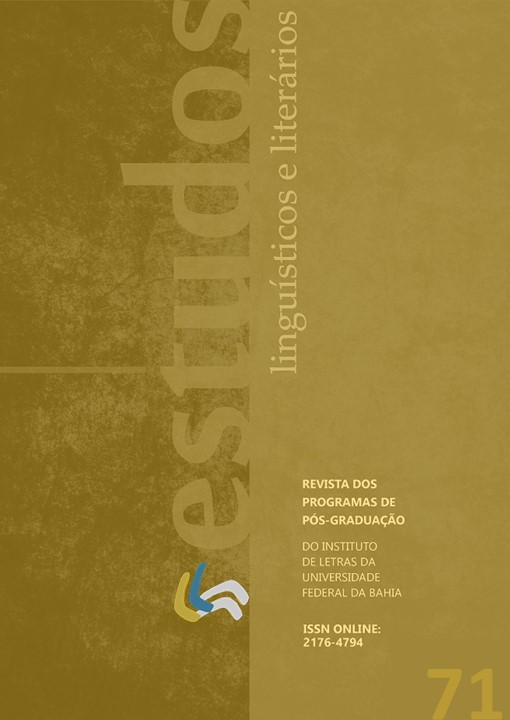"THE LADY WHO HAPPENED TO BE A DOLL": THE EPISODE OF THE ANDRADA’S GARDEN AND THE NOT PROPER BODIES IN THE NARRATIVE OF A ESMORGA
DOI:
https://doi.org/10.9771/ell.i71.48227Keywords:
Galician literatura, Neorealism, Eduardo Blanco Amor, Body, HomosexualityAbstract
The main objective of this article is to analyze the role of inappropriate bodies within A esmorga, by Eduardo Blanco Amor, from the Xardín dos Andrada episode. To this end, Silvia Federici's definitions (2017) of body disciplining will be presented, as well as the concept from “the self's clean and proper body” by Margritt Shildrick (2002). Alberto Mira's definition (2007) of marginal homosexuality will also be used, in order to relate the ideas of bodies outside the norm, presented by Federici (2017) and Shildrick (2002), with the character of Milhomes, so that, at the end of this work, it is possible to perceive, not only criticizing the homophobic logic of Galician and Spanish society, which Blanco Amor, ironically, presents in the novel, but also the importance of the Xardín episode due to the parallel it establishes with the repressed desires of Bocas by Milhomes.
Downloads
References
BLANCO AMOR, Eduardo. A esmorga. 14ª ed. Vigo: Galaxia, 1995
CARRO, Xavier. Claves para unha lectura de A esmorga. Grial. Vigo, v. 31, n. 117, p. 5-17, jan./mar. 1993.
COHEN, Jeffrey Jerome. Cultura de Monstro: sete teses. In: HUNTER, Ian; DONALD, James; COHEN, Jeffrey Jerome; GIL, José. A pedagogia dos monstros: os prazeres e os perigos da confusão de fronteiras. Belo Horizonte: Autêntica, 2000. p. 25-55.
FEDERICI, Silvia. Calibã e a bruxa: mulheres, corpo e acumulação primitiva. Tradução por Coletivo Sycorax. São Paulo: Elefante, 2017.
FORCADELA, Manuel. Guía de lectura de A esmorga de Eduardo Blanco Amor. Vigo, 1991. Disponível em: [https://oximnasiodeacaderno.files.wordpress.com/2012/05/guc3ada-de-lectura-de-a-esmorga-de-eduardo-blanco-amor.pdf]. Acesso em:
NOGUEIRA, Álex Alonso. Blanco Amor e a constitución do campo literario galego durante os anos de Galaxia. Grial. Vigo, v. 47, n.184, p. 28-35, out./dez. 2009.
PIRES, José Cardoso. Balada da praia dos cães: dissertação sobre um crime. Rio de Janeiro: Civilização Brasileira, 1983.
SANDÉZ, María López. A esmorga: espazo urbano e simbolismo espacial. Grial. Vigo, v. 47, n. 184, p. 16-27, out./dez. 2009.


